www.jb-electronics.de » Elektronik » Nixie-Röhren » Nixie-Sammlung » GI-10
GI-10
Die GI-10 vom amerikanischen Hersteller National Union ist - wie auch die GI-21 - eine der ältesten Nixies der Welt; sie besitzt handgebogene Ziffern, und zudem hat sie die Besonderheit, dass sie kein Anodengitter besitzt, also die umgebenen Ziffern als Anodengitter benutzt werden müssen.
Die Nixie ist recht länglich aufgebaut und das Gehäuse erinnert aufgrund des seitlichen Pumpstutzens ein bisschen an das der IN-2:
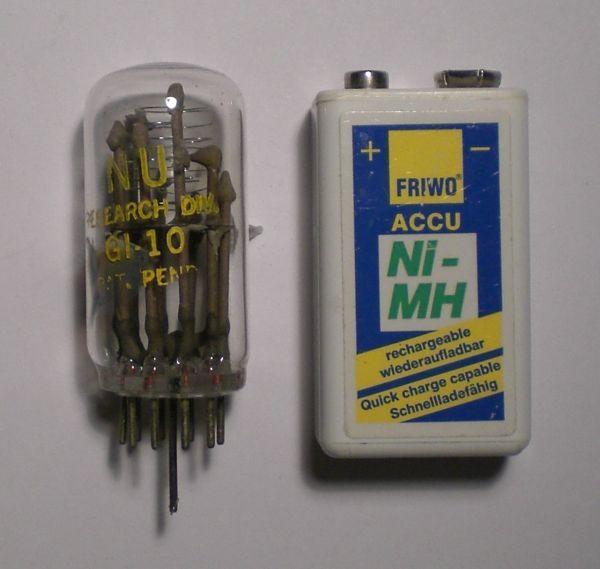
Hier kann man den internen Aufbau der GI-10 erkennen:
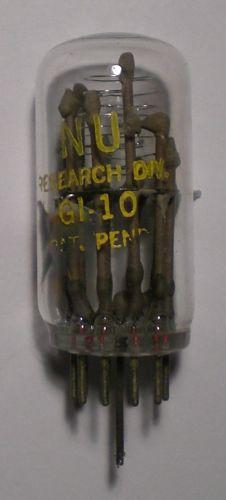
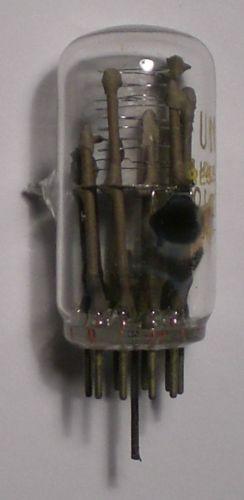
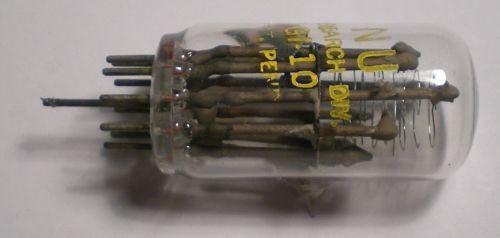
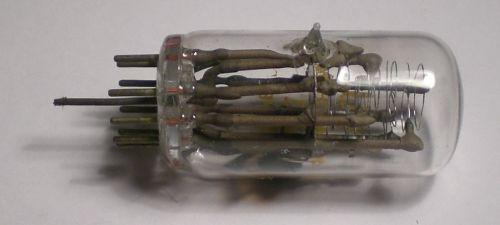
Der Sockel besteht aus den neun Standardpins für die damaligen Röhren plus einem internen (längeren) Pin, damit nach wie vor alte Röhrenfassungen (Standard-Novalfassung) genutzt werden konnten:
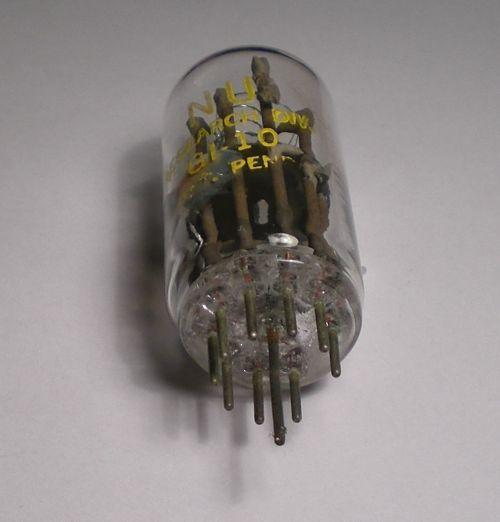
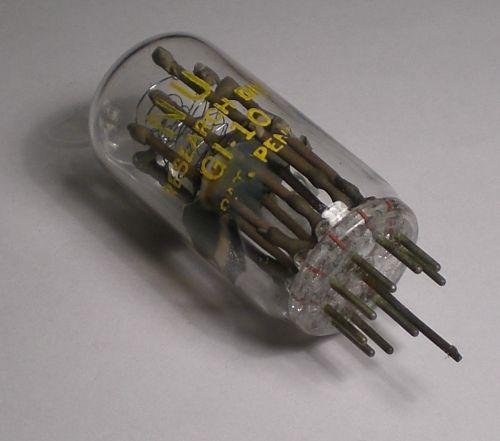
Hier ist die Originalverpackung der GI-10 zu sehen - die grüne Farbe ist typisch für National Union, siehe dazu unten auch das Datenblatt.
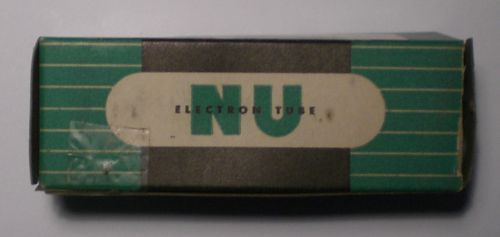
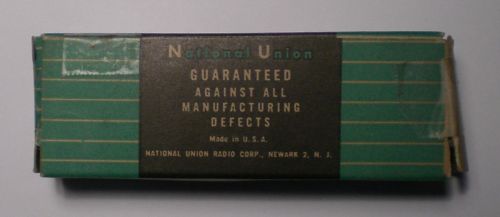
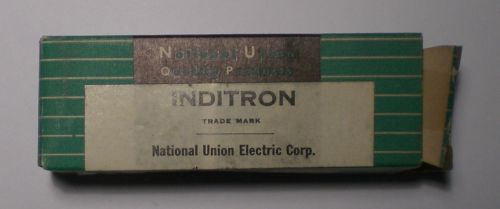
Das Leuchtbild der GI-10 sieht etwas verschwommen aus:
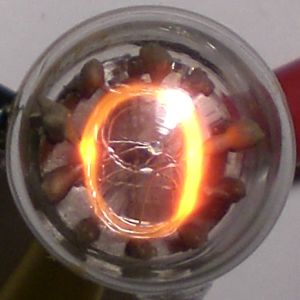
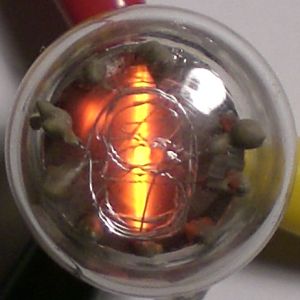
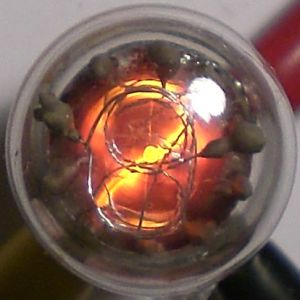
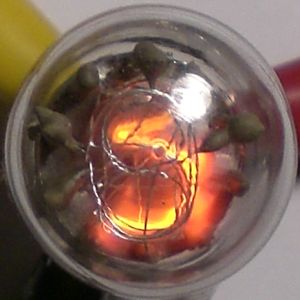
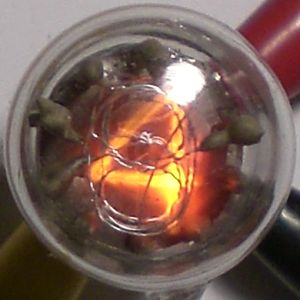
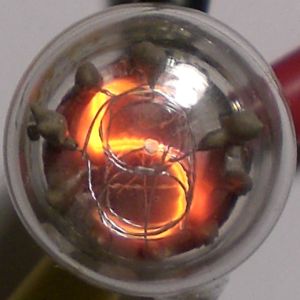
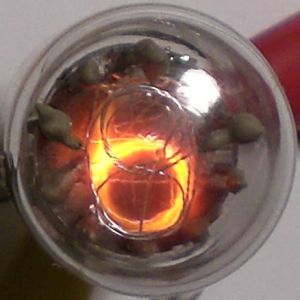
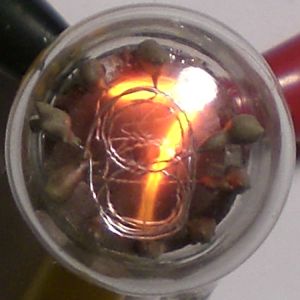
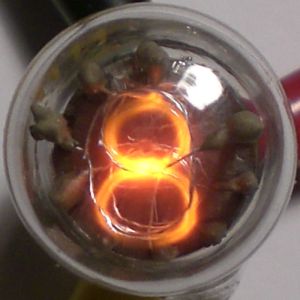
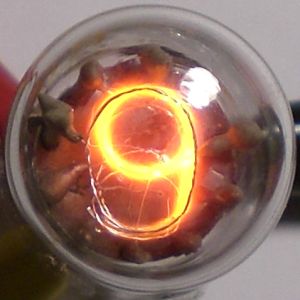
Das Leuchtbild ist auf den Bildern schlechter als in der Realität, da die Ziffer flackern und nur schwer auf dem gleichen Helligkeitsniveau zu halten sind.
Vielleicht war auch der Ansteuerungsstrom falsch, da ich das Datenblatt erst nach Aufnahme dieser Bilder fand.
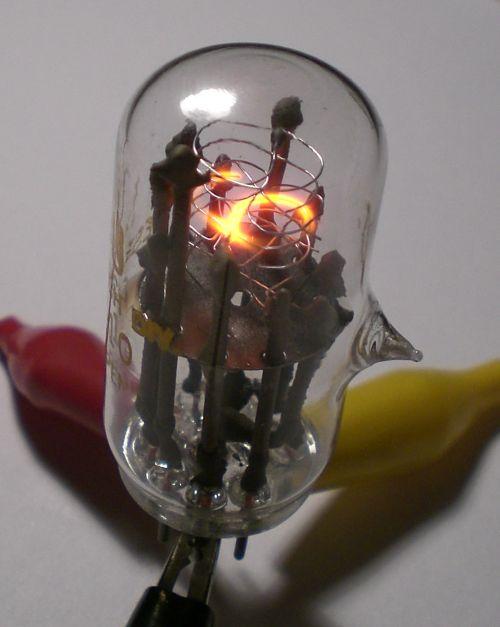
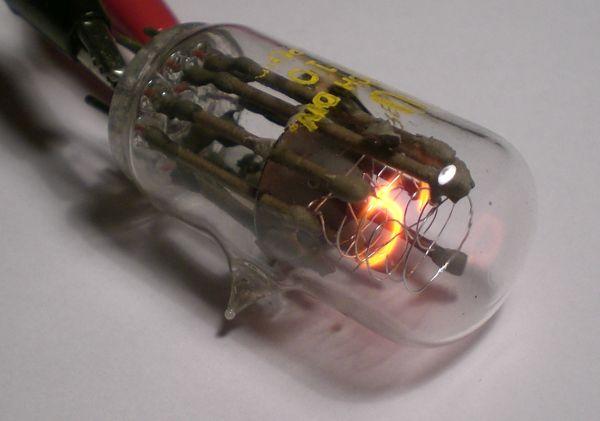
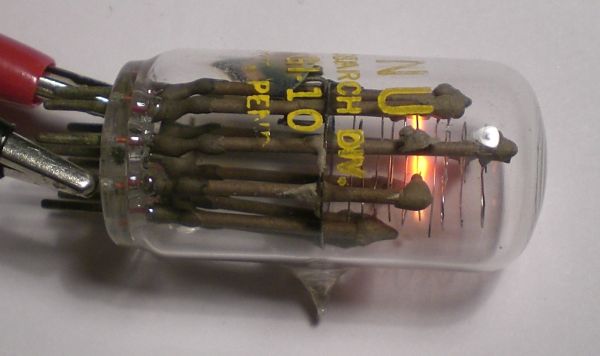
Man braucht wohl nicht zu erwähnen, dass die GI-Serie von National Union nicht lange auf dem Markt geblieben ist, da die Ansteuerungselektronik komplexer als für vergleichbare Nixies mit Anodengitter hätte sein müssen.
Historisch ist die GI-10 eine sehr frühe Nixie; es wurde schon 1950 ein Patent mit der Nummer US2769939 beantragt, das der GI-10 erstaunlich ähnlich sieht:
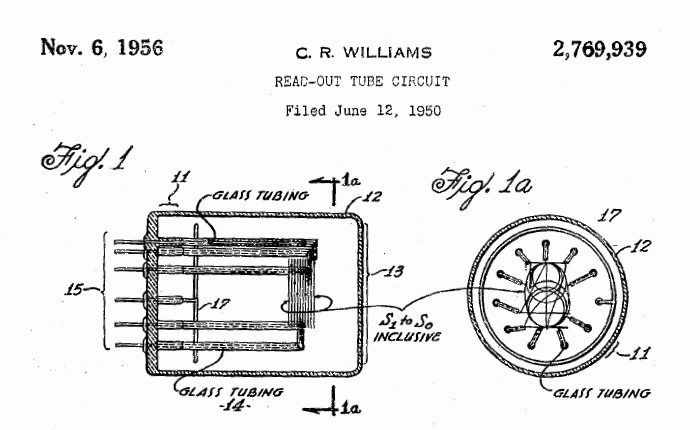
Das Patent mit der Nummer US2756366, beantragt im Jahr 1954, erteilt im Jahr 1956, wird heutzutage als das offizielle GI-10-Patent angesehen:
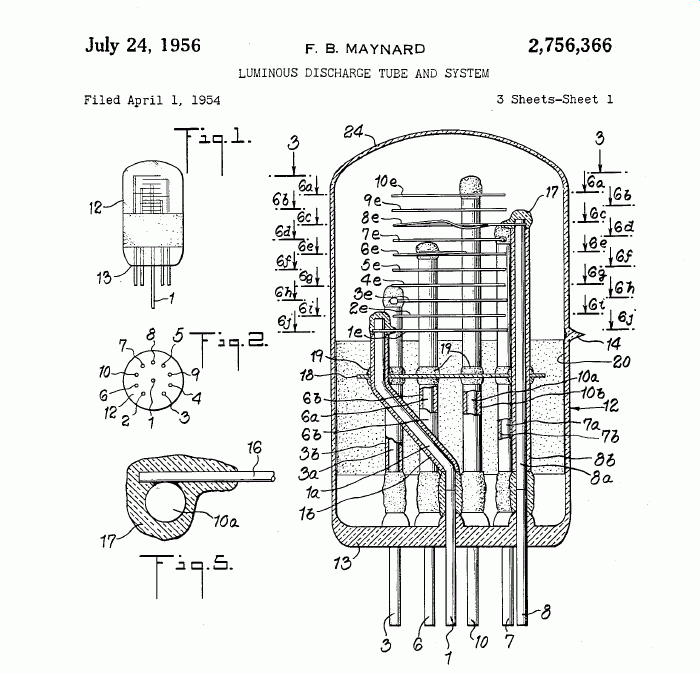
Denn der Halter dieses Patents ist laut Patentschrift die Firma National Union. Zudem deuten darauf Verweise innerhalb anderer Patentschriften hin, hier ein Beispiel aus dem Patent US2871461 aus dem Jahr 1955:
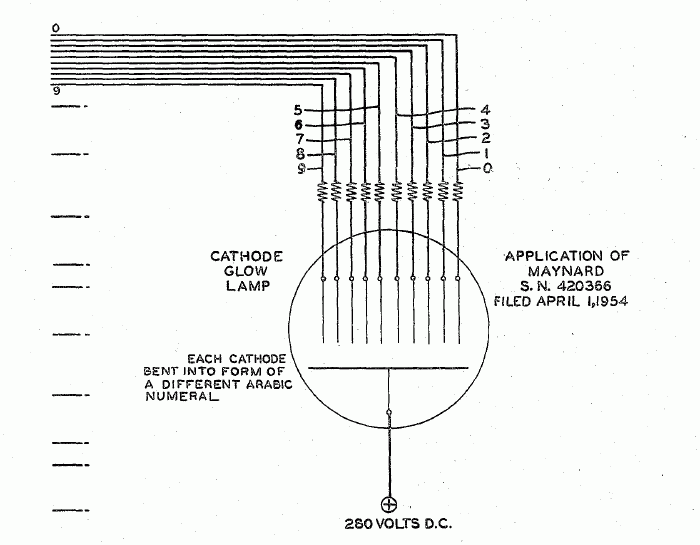
Später heißt es dort:

Dem widerspricht jedoch, dass die abgebildete Röhre bereits eine Anode besitzt - ein klares Argument gegen ein Inditron von National Union. Wer mehr weiß, kann mir gerne eine Email schreiben, ich würde mich freuen.
Wenn man im Zusammenhang mit der GI-10 von Patenten spricht, sollte man im Hinterkopf behalten, dass die meisten GI-10 Inditrons mit "Patent Pending" gelabelt sind - so auch dieses Exemplar. Das bedeutet, dass zum Herstellungszeitpunkt das Patent noch gar nicht erteilt war.
Die erwähnten Patente können Sie hier herunterladen:
- US2756366.pdf (382 KB)
- US2769939.pdf (185 KB)
- US2871462.pdf (810 KB)
Hier ist die GI-10 in einem Artikel der Zeitschrift Popular Science aus dem Jahr 1954 zu sehen:
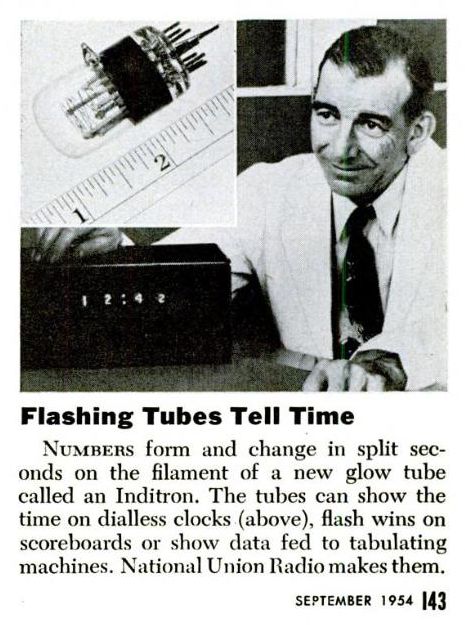
Entwickelt wurde die GI-10 im National Union Research Laboratory in Orange (Vorstadt von Newark), New Jersey. Aus einem Booklet von National Union der frühen Fünfziger entstammt diese Seite:
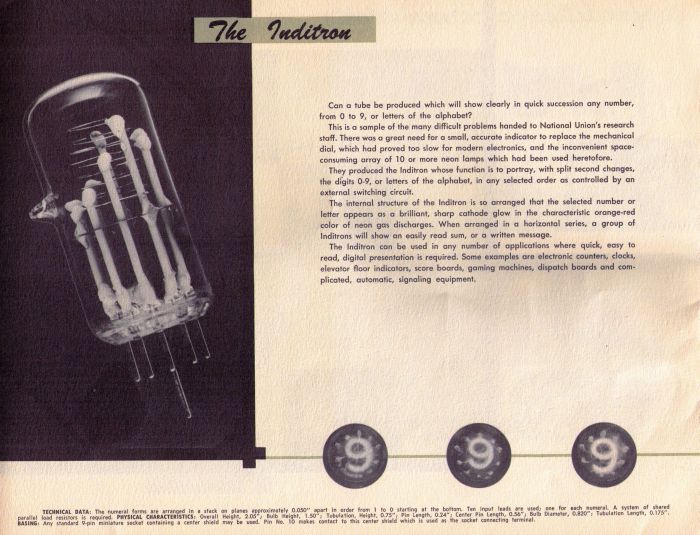
Hier ist das Datenblatt zur GI-10 zu sehen:
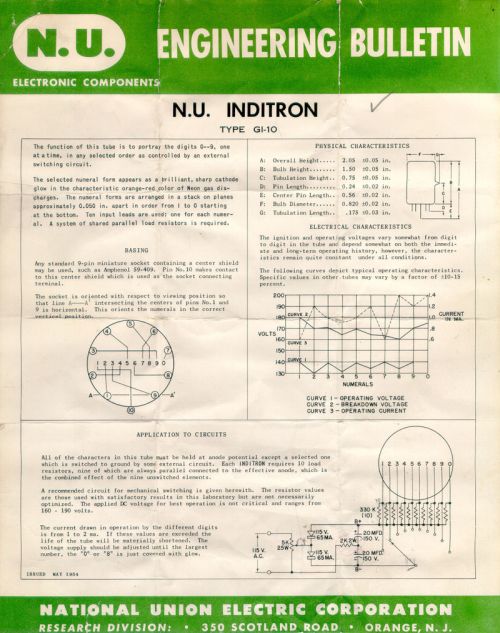
Das gesamte Datenblatt (in voller Auflösung) gibt es hier zum Download: data_GI-10.jpg (272 KB)
 |
Haben Sie Informationen über die Entwicklungs- und Fertigungszeit der GI-10 und GI-21, oder sonstwie Informationen oder Quellen? Schreiben Sie mir doch eine Email, wenn Sie mir helfen können, ich würde mich freuen! |  |